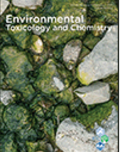Little

is known about the effect of metal mixtures on marine organisms, especially after exposure to environmentally realistic concentrations. This information is, however, required to evaluate the need to include mixtures in future l risk assessment procedures. We assessed the effect of copper (Cu)–Nickel (Ni) binary mixtures on
Mytilus edulis larval development using a full factorial design that included environmentally relevant metal concentrations and ratios.